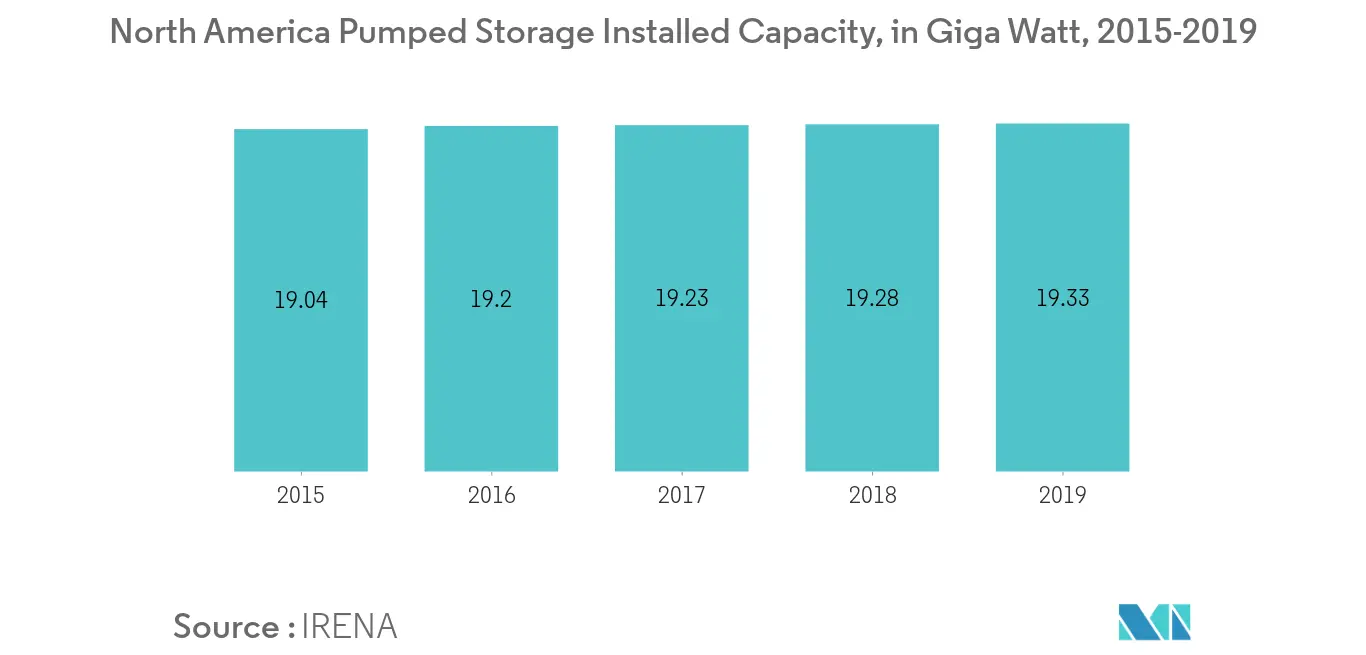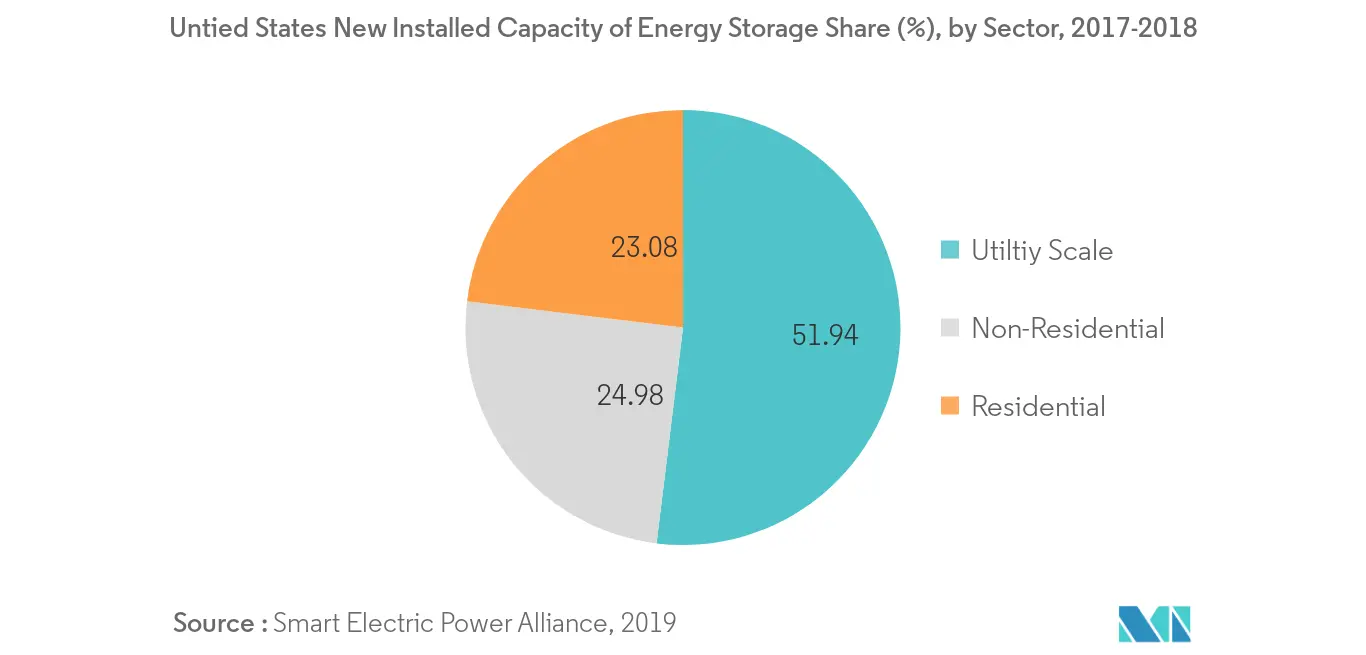Market Trends of North America Energy Storage Industry
This section covers the major market trends shaping the Noth America Energy Storage Market according to our research experts:
Pumped-storage hydroelectricity (PHS) Segment to Dominate the Market
- Pumped hydropower storage projects accounted for around more than half of the installed energy storage capacity in the region, driven majorly by the United States, as of 2020.
- Bulk storage, such as pumped storage hydropower, can significantly reduce the need for conventional reserve generation capacity, support the development and optimal integration of renewable energy resources, and reduce the amount of new transmission required to support the regional goal of 20-33% renewable generation by the end of 2020 in Untied States. This, in turn, is expected to increase the installation of pumped hydro storage.
- The growing concerns regarding energy security, increasing integration of renewable energy technologies, and increasing investments toward deployment of grid networks are expected to further drive the demand for PHS across North America.
- Canada's power sector is dominated by renewable sources, especially hydropower accounting for more than half of the generation. States, such as Ontario, witnessed robust and diverse supply mix, further driving the PHS market in the region.
- Therefore, the above mentioned factors are expected to drive the PHS market during the forecast period in North America region.

United States to Dominate the Market
- The United States is expected to be the largest market for energy storage in North America with an increasing demand for uninterrupted energy demand within the country.
- The country's power generation is dominated by coal and gas-fired power plants, and it is witnessing a shift from coal-based power generation to cleaner sources of energy. In 2018, nearly 50% of the new utility-scale power generation capacity was from renewables, especially wind and solar
- As of March 2019, the total utility-scale battery storage power capacity planned to come online through 2023 was 1,623 MW. In the United States, 16 operating battery storage sites have an installed power capacity of 20 MW or greater. Out of the 899 MW of installed operating battery storage reported by the states, as of March 2019, California, Illinois, and Texas accounted for a little less than half of that storage capacity.
- In the first quarter of 2019, 60 MW of utility-scale battery storage power capacity came online, and an additional 108 MW of installed capacity was expected to become operational. Out of these planned 2019 installations, the largest is the Top Gun Energy Storage facility in California, with 30 MW of installed capacity.
- Moreover, the energy storage systems are used to store the power produced by wind turbines. Hence, with the increasing new installations in wind energy, the requirement for energy storage systems is expected to grow parallelly.


